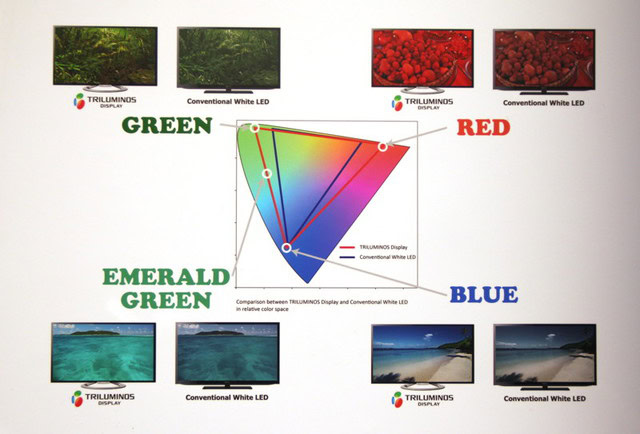Affiliate links on Android Authority may earn us a commission. Learn more.
The Xperia Z Ultra's Triluminos and X-Reality Engine technologies explained
June 25, 2013

The Sony Xperia Z Ultra was officially launched today, and just as the leaks indicated, the sleek device comes with a couple of interesting features in the display department – Triluminos and X-Reality Engine.
The TFT displays on the Xperia Z, ZL, and other older devices from Sony have been criticized for their washed out colors and poor viewing angle. Will Triluminos and X-Reality change that perception?
Let’s get the basics out of the way first. The Xperia Z Ultra boasts a 6.4-inch TFT display of 1920 x 1080 resolution (also known as 1080p or Full HD), with a pixel density of 342 pixels per inch. These specs should ensure wonderfully crisp images, though there are other devices that boast higher pixel densities – Sony’s own 5-inch Xperia Z features a 441 ppi density, while the 4.7-inch HTCOne leads the race with a density of 469 ppi.
Sony has a glorious history in display technology, dating back from when it was making the most appreciated television sets on the market. Under the leadership of CEO Kaz Hirai, who took the reins in early 2012, the company has embarked in the so called “One Sony” turnaround strategy, which emphasizes, among others, the need to make the best possible use of technologies developed in-house across Sony’s various areas of activity.
For the mobile division, One Sony meant adopting display technologies originally created for TV displays, such as the Bravia engine, and now Triluminos and X-Reality.
Now that we have a little background, let’s see what Triluminos and X-Reality actually are and how they work.
Triluminos
Explained plainly, Triluminos is a technology that enables LCD TFT displays to show a wider range of colors, and thus to display images that are richer and more vivid.
According to MIT Technology Review, a Triluminos display boasts a color gamut that is 50 percent larger than that of a conventional LCD panel. How is this possible? By using quantum dots.
Quantum dots are best described as light-emitting nanoparticles. Basically, they are very small (2-10 nanometers) particles of a material that emits light. Depending on the size of the particle, which can be controlled precisely, quantum dots emit light in a specific wavelength, which the human eye perceives as a specific color.
Conventional LCD displays use a white backlight that passes through red, blue, and green filters to form the color that the user perceives. The problem with this approach is that filters are not very selective – in other words, it’s hard to form very specific colors, and the end result are washed out colors. With Triluminos, the white backlight is replaced by a blue LED, which emits a blue light that causes a film of quantum dots to produce pure green and pure red. The different wavelength light is combined to form the color on the screen. This way the display can show more pure, unadulterated colors.

Triluminos tech should allow the Sony Xperia Z Ultra to compete with the Super AMOLED displays on Samsung flagships, which are recognized for their rich colors. That’s the theory at least, and there are other factors that determine the quality of a display, such as contrast, brightness, visibility in sunlight, and viewing angles.
Here’s an interview with a Sony executive that provides more details on Triluminos, courtesy of AV Forums.
X-Reality Engine
X-Reality is an image processing technology that enhances the images and videos displayed on the Xperia Z Ultra. It makes pictures look sharper, reduces noise, improves contrast, and fine tunes saturation.
Sony has been using the X-Reality and X-Reality Pro image processors on its high-end TVs for a while now, though it’s not clear to us if X-Reality for mobile is the same thing.
So, how does X-Reality work? According to Sony, the software breaks down the signal sent to the display into several components – texture, outline, contrast, and color. Each one is separately analyzed and processed, to ensure the clearest, sharpest, most attractive final image.
Of course, results may vary. The videos of your kittens that you filmed with your old 3MP camera phone won’t magically turn into crystal-clear, high definition masterpieces. But in some situations, X Reality will make content look noticeably better.
Here’s a demo of the X-Reality technology in action.
And here’s a more in-depth explanation of how image processors work (in this case, it’s the similar Bravia Engine). Thanks, Rob!
To wrap up, both Triluminos and X-Reality look great on paper, but we’ll have to see them work for ourselves before we pass a judgment on their ultimate usefulness.
Thank you for being part of our community. Read our Comment Policy before posting.